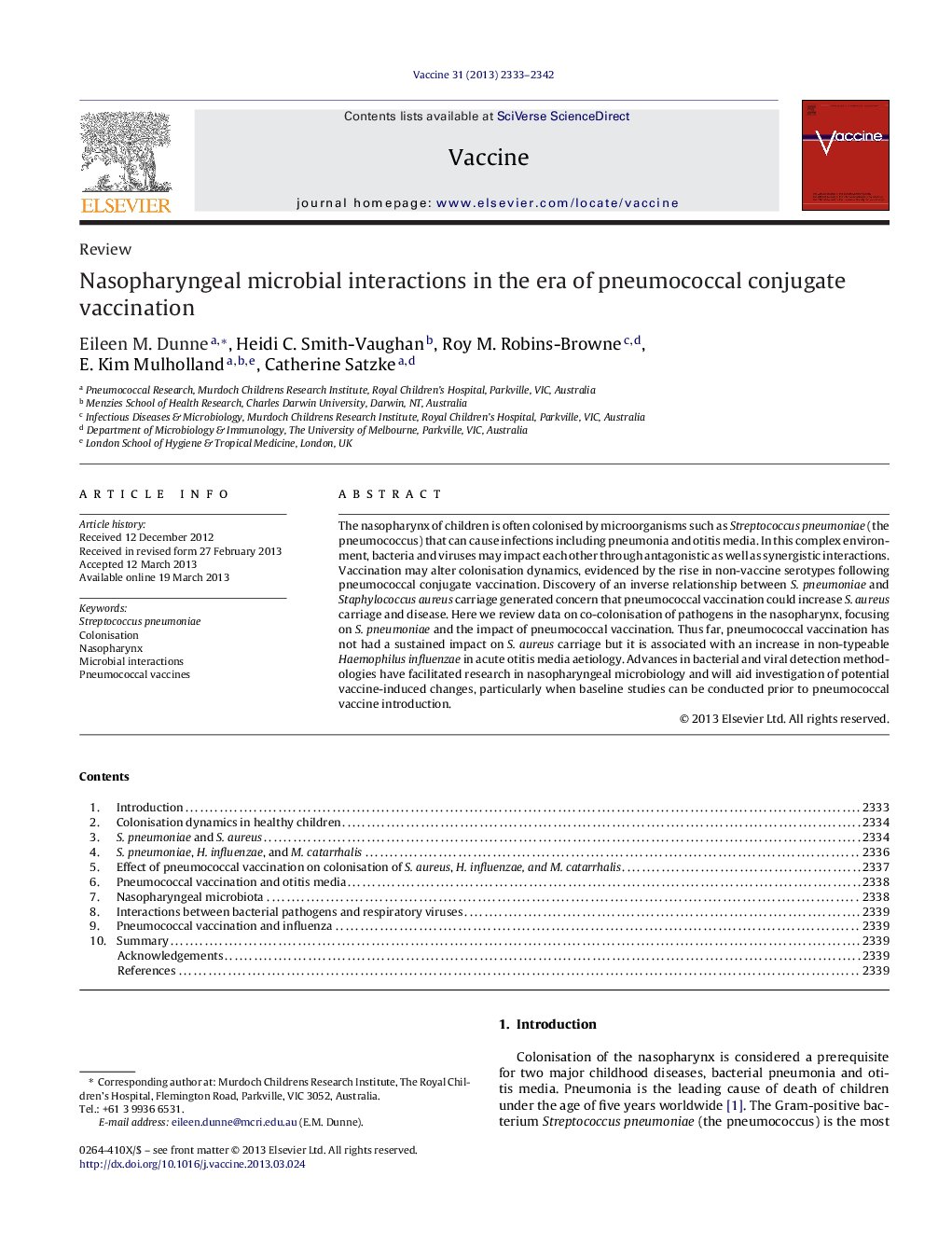| کد مقاله | کد نشریه | سال انتشار | مقاله انگلیسی | نسخه تمام متن |
|---|---|---|---|---|
| 2403147 | 1102886 | 2013 | 10 صفحه PDF | دانلود رایگان |

• Clinically important pathogens often colonise the nasopharynx of children.
• Vaccination may alter colonisation dynamics and impact disease aetiology.
• We review co-colonisation of pathogens and the impact of pneumococcal vaccination.
The nasopharynx of children is often colonised by microorganisms such as Streptococcus pneumoniae (the pneumococcus) that can cause infections including pneumonia and otitis media. In this complex environment, bacteria and viruses may impact each other through antagonistic as well as synergistic interactions. Vaccination may alter colonisation dynamics, evidenced by the rise in non-vaccine serotypes following pneumococcal conjugate vaccination. Discovery of an inverse relationship between S. pneumoniae and Staphylococcus aureus carriage generated concern that pneumococcal vaccination could increase S. aureus carriage and disease. Here we review data on co-colonisation of pathogens in the nasopharynx, focusing on S. pneumoniae and the impact of pneumococcal vaccination. Thus far, pneumococcal vaccination has not had a sustained impact on S. aureus carriage but it is associated with an increase in non-typeable Haemophilus influenzae in acute otitis media aetiology. Advances in bacterial and viral detection methodologies have facilitated research in nasopharyngeal microbiology and will aid investigation of potential vaccine-induced changes, particularly when baseline studies can be conducted prior to pneumococcal vaccine introduction.
Journal: Vaccine - Volume 31, Issue 19, 1 May 2013, Pages 2333–2342